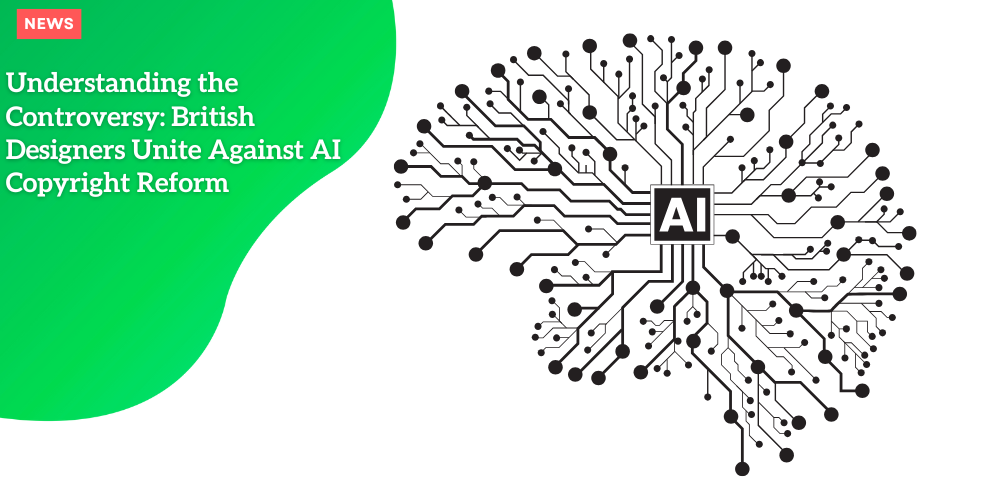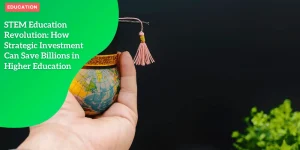Understanding the Controversy: British Designers Unite Against AI Copyright Reform

Anúncios
Introduction to the Copyright Reform Controversy
The UK government has recently stirred a hornet’s nest with the proposed reform of copyright laws, which would allow AI companies to train their models on copyrighted work without seeking explicit permission.
The suggestion is part of a larger strategy aimed at dissolving the barriers hindering technological and creative advancements.
Anúncios
However, this proposal has unleashed a torrent of criticism, especially from the design industry.
Key Opposition from Designers
A stern letter expressing strong opposition was sent to the Technology Secretary, Peter Kyle, signed by 35 eminent UK-based designers.
Anúncios
Among these are renowned figures like Sebastian Conran and Jasper Morrison, who worry the reform could severely damage the British design industry.
These designers caution that the welcomed ease of access for AI companies could run “roughshod” over the creative sector.
The assertion is that their works, which contribute significantly to both national wealth and global trade, should not be put at risk.
Sebastian Conran, for instance, chairs Conran and Partners, an esteemed architecture and interior design practice.
Jasper Morrison stands as one of the most influential product designers.
The signatories also include notable personalities like Tomoko Azumi and Tom Dixon.
They argue that their industry thrives on an intricate web of copyrights, intellectual property rights, and patents, much like the music industry.

Broader Context of Creative Industry Pushback
The design industry’s opposition is far from isolated. Broader waves of dissent have surged from other creative fields including publishing, music, film, and television.
High-profile critics include Sir Paul McCartney, Richard Osman, and Kate Bush.
They, too, stress that their creative control and the intellectual property that protects their work could be compromised under the proposed reform.
The controversy primarily stems from the idea of an “opt-out” system.
Under these guidelines, creators would have to actively choose to exclude their works from being used for AI training, rather than giving explicit consent.
Many see this as an unfair and impractical burden that could lead to unauthorized use of protected materials.
This proposal also places transparency obligations on AI companies to disclose the content used for training their models.
Onward Impacts
The ongoing debate underscores a significant tension between fostering innovation and safeguarding creative rights.
The government’s point of view is that existing copyright laws currently restrain the potential of the creative industries and the AI sector, thus justifying the need for reform.
At the same time, it has committed to implementing transparency measures and expressed an openness to revisit the reform plan if necessary, ensuring it meets all objectives and addresses concerns.
As we move forward, it’s crucial to understand the proposed changes in detail to evaluate their repercussions for intellectual property rights and creative control.
This chapter sets the stage for delving deeper into the specific alterations suggested by the government and examining the implications from multiple perspectives.
| Scenario | Before | After (Proposed Changes) |
|---|---|---|
| 🏛️ British Design Heritage | Iconic British designs like the red phone box and London Underground map | Potential erosion of intellectual property rights affecting future designs |
| 💡 Design Industry Contribution | Major contributor to national wealth and global trade | Risk of reducing innovation and global competitiveness due to weaker intellectual property laws |
| 🎨 Key Designers’ Stance | Designers like Sebastian Conran, Jasper Morrison, and Tom Dixon support strong intellectual property laws | Opposition to proposed copyright law reform that could undermine future design innovations |
| ⚖️ Government Proposal | Existing copyright and patent systems protect the value of design work | The proposal may undermine these protections, affecting designers’ work and future innovations |
| 🌍 Future Implications | A thriving design industry contributing significantly to the UK economy | Potential risks to the UK’s global design reputation and economic contributions if reforms go ahead |
Understanding the Proposed Changes
The proposed changes to the UK’s copyright law aim to balance the demands of the burgeoning AI sector with the established protections for creative industries.
This balancing act centers on a new opt-out system, increased transparency requirements, and their impact on longstanding intellectual property rights and creative control.
The Opt-Out System
Central to the new proposal is an opt-out system for copyright holders.
Under this system, AI companies would be permitted to use copyrighted materials for training their models unless the copyright holders explicitly opt out.
This shifts the burden of action from AI developers to creators, requiring them to actively protect their work rather than passively benefiting from existing copyright protections.
Critics argue that this approach is unfair and impractical, placing a disproportionate burden on individual creators and small businesses who may lack the resources to navigate such an opt-out mechanism effectively.
Transparency Requirements for AI Companies
To counterbalance the broader access to copyrighted materials, the government has included provisions for increased transparency from AI companies.
These companies will need to disclose the content used to train their models, offering creators some visibility into how their work is utilized.
This transparency is intended to foster trust and accountability within the creative industries.
However, there are concerns that merely knowing which works have been used does not adequately compensate creators or protect their intellectual property.
Impact on Intellectual Property Rights and Creative Control
The proposed changes have significant implications for intellectual property rights and creative control.
By allowing AI companies unrestricted access to copyrighted materials (unless an opt-out action is taken), the reform could undermine the financial incentives that underpin the creative sector.
Esteemed designers like Sebastian Conran and Jasper Morrison have voiced concerns that the opt-out system, coupled with transparency measures, does not sufficiently safeguard their intellectual property.
They argue that this could lead to a devaluation of original design work, with potential knock-on effects for the entire industry.
Moreover, by potentially diluting the control designers have over their creations, this reform risks damaging the trust and respect that underpin the UK’s creative economy.
The design sector, much like the music industry, relies heavily on a robust framework of copyright, intellectual property, and patents to protect and monetize its innovations.
The proposed changes, while aimed at fostering technological advancement, may inadvertently stifle the innovation they seek to promote by diminishing the security and economic viability of professional design work.
As the UK government pushes forward with these reforms, it must carefully navigate the competing interests of fostering AI innovation and protecting the creative industries that have long been a cornerstone of the nation’s cultural and economic wealth.
These tensions underline the complexity and high stakes of the ongoing copyright reform debate.
Designer’s Core Arguments
Drawing Parallels with the Music Sector
The concerns expressed by the UK’s top designers regarding the proposed copyright law reforms draw a compelling parallel with the music sector.
Much like musicians, designers rely heavily on a nuanced system of copyright protection to safeguard their work.
This system includes intellectual property (IP) rights and patents, all of which interconnect to form the backbone of the creative industry.
The reforms propose an opt-out system, enabling AI companies to use copyrighted materials unless explicitly forbidden.
This approach has been criticized as impractical and potentially damaging to the design industry’s economic ecosystem.
Designers argue that, similar to music, any loosening of these protections could lead to exploitation and devaluation of original creations.
The Interconnected System of Protection
Designers like Sebastian Conran and Jasper Morrison emphasize the intricate balance that currently exists between various forms of legal protections.
These protections allow designers to retain creative control and commercial value over their work.
The interconnected system of copyright, IP, and patents is not just legal jargon; it’s a framework that enables designers to invest time, creativity, and resources into their projects with some assurance of return on investment.
Disrupting this system could have far-reaching implications, eroding the stability and incentives that drive innovation in the design sector.
Government’s Understanding of the Design Sector
One of the most significant concerns from the design community is the perception that the government does not fully understand or value their contributions.
The letter to Technology Secretary Peter Kyle underscores that the design sector has been instrumental in building the UK’s wealth, reputation, and global trade.
Iconic designs like the red phone box, the London Underground map, and even the iPhone underscore the sector’s impact.
Yet, the proposed reforms suggest a lack of appreciation for how these protections contribute to the design industry’s success.
By allowing AI to train on copyrighted material without explicit consent, the government risks undermining a sector that has consistently demonstrated its value.
Transitioning from these core arguments, the debate over these reforms encapsulates a broader tension.
On one side is the need to foster innovation and keep pace with technological advancements.
On the other is the necessity to protect creative rights and ensure that industries built on intellectual property continue to thrive.
This tension is at the heart of the current discourse and will shape the future of the UK’s creative industries.
Government’s Perspective and Future Implications
Current Stance on Copyright Laws
The UK government finds itself at the crossroads of innovation and protection as it navigates the often thorny path of copyright reform.
At the heart of this debate lies the government’s assertion that the current copyright laws are stifling creative potential and technological advancement.
As the landscape of creativity evolves with technology’s progression, the government argues that existing laws must adapt to facilitate growth in both the media and AI sectors.
Current copyright laws, they say, act as a bottleneck, preventing industries from reaching their full potential.
This position seems to embrace a broader narrative of facilitating technology to enrich the creative domains of the nation.
The emphasis is on removing barriers that curb innovation while still acknowledging the intrinsic value of creative work.
Commitment to Transparency
One of the more contentious areas of the proposed reform is the government’s focus on transparency.
They aim to draw a clear line about what content AI developers use for model training. Such measures are designed to ensure that AI progression does not trample on creative ownership.
The proposition suggests an enforced transparency where AI companies will be asked to clearly state what copyrighted materials they access, advocating for a method of openness that reassures all stakeholders.
However, the efficacy and practicality of these transparency measures remain subjects of debate.
Critics argue that while noble in intention, the real-world application might lag, especially in sectors where copyrighted work is deeply intertwined with market success.
Balancing Innovation and Creative Rights
The government is wrestling with balancing the push for innovation against the need to protect creative properties.
This struggle is palpable in their commitment to devise practical solutions that do not disregard existing protections.
Promises have been made that no decisions will be rolled out until a comprehensive and inclusive plan is crafted, indicating a slow and deliberate approach to legislative change.
Such caution reflects the recognition of tension between advancing technology and the fundamental rights of creators.
The government hopes to arrive at a middle ground where technology acts as a complement to, rather than a competitor of, creative sectors.
As we move forward, a deeper understanding of these positions and the government’s next steps will be critical.
The evolving dialogue between policymakers and the creative industries continues to shape this pivotal juncture in copyright law reform.






